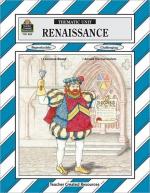|
This section contains 2,974 words (approx. 10 pages at 300 words per page) |

|
John Hus. The Council of Constance (1413-1415) dealt with a major issue concerning a charge of heresy against John Hus, a theologian from Bohemia. Heresy can be defined as holding a doctrine condemned as erroneous by a proper church authority. The Church had asserted its right to hand over heretics to the secular arm—the state— for execution based on a law enacted by the Roman emperor Constantine. As of 1350 there was little in the way of organized heretical groups across Europe, but shadowy groups appeared and disappeared often in a haze of blood. The most notorious were the Brethren of the Free Spirit, although what is known about them comes almost entirely from their opponents and is therefore most certainly biased. As recorded in their heresy trials, the Free Spirits believed that they could attain union with...
|
This section contains 2,974 words (approx. 10 pages at 300 words per page) |

|




